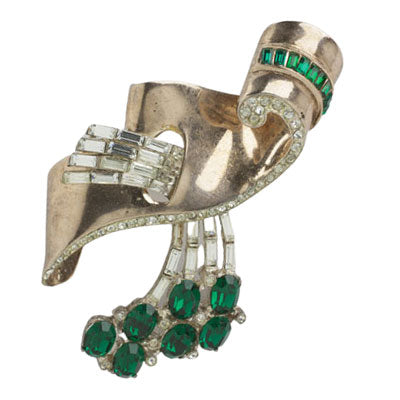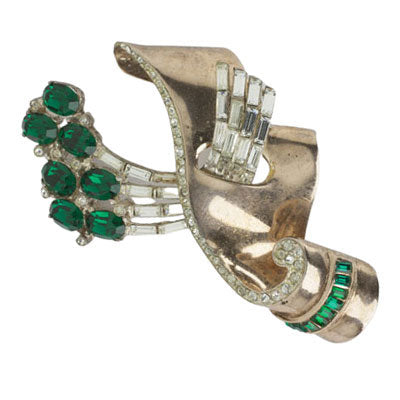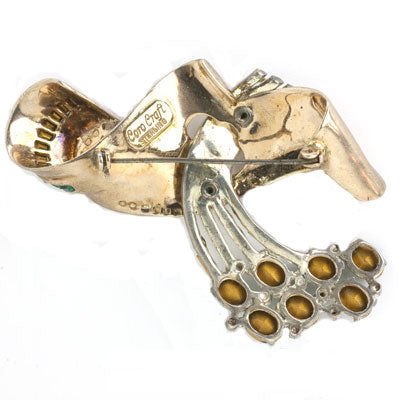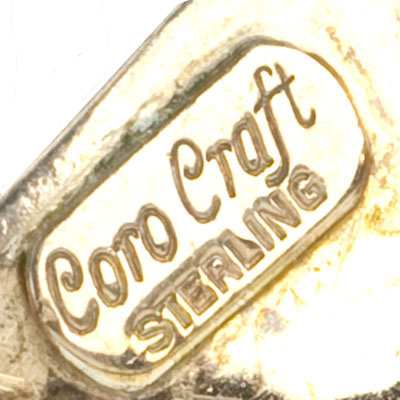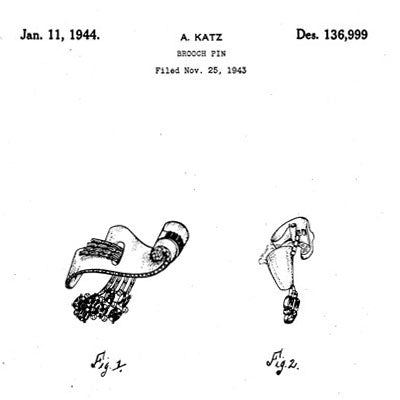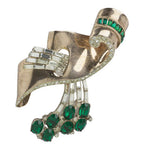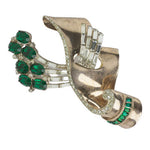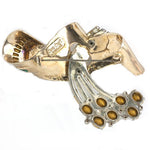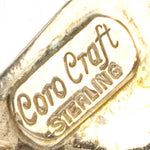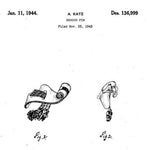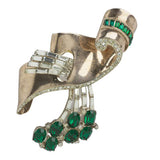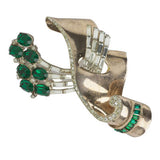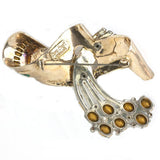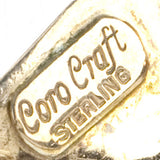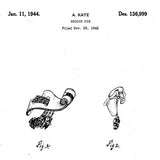Emerald, Diamanté & Vermeil Coro Bouquet Brooch
MAKER: Coro
SIZE: 3" x 2"
CONDITION: Excellent
DATE: c.1943-1944
MARKS: "Coro Craft" (in script) and "STERLING" on oval cartouche
REFERENCE: Design patent D136,999 issued to Adolph Katz in 1944 (application filed in 1943); 1944 magazine ad
This Coro bouquet brooch is another beautiful Retro Modern design by Adolf Katz for Coro’s high-end line. This jewel features a gold-plated-sterling silver wide furled ribbon. It has one edge trimmed in diamantés and emerald-glass baguettes at the center of the curl. A cut in the ribbon holds four baguette-lined stems with faceted, oval, foil-backed emerald-glass flowers with diamanté accents. This jewel has a complex construction, as illustrated by the rivets that bind the elements. The pin fastens with a roll-over safety clasp. This brooch was included in an ad in the August 1, 1944 issue of Vogue that featured Coro-Craft “Masterpieces of Fashion Jewelry”. The first image shows the brooch as it is positioned in the technical drawing for the design patent; the second shows it as positioned in the ad. You decide how to wear it!
FREE SHIPPING to the United States and Canada
Why Buy Vintage Costume Jewelry?
One reason is that it’s environmentally friendly. Resale fashion and vintage jewelry has become a preferred sustainable and affordable shopping choice by today’s discerning fashion and eco-conscious consumer.
Another major reason is the quality. Although vintage costume jewelry was made for all levels of the marketplace – from dime stores to high-end fashion boutiques and jewelry stores – you will find only the best pieces here. They were well-designed and carefully made to last. The manufacturers represented here used only the finest materials – glass stones and beads from Bohemia, Austria, and France, and faux pearls from France and Japan. Settings were primarily sterling silver, gold-filled, or base metals heavily plated with gold, silver, or rhodium. Stones were hand-set, and pieces were hand-finished.
The northeastern part of the U.S. was the center of the industry, with the largest companies located in Providence, Rhode Island by the end of World War II. During the Depression, the quality of costume pieces climbed to new levels when many jewelers and craftsmen had to switch to this segment of the industry. In addition, it attracted many skilled workers who fled the political situation in Europe for the U.S. For these reasons, designs and manufacturing techniques rivaled those employed in the making of fine jewelry.
A third reason to buy costume jewelry is its uniqueness. Having survived for so many decades in such wonderful condition and having been selected for their aesthetic quality, the pieces you’ll find here are unlikely to be found elsewhere.
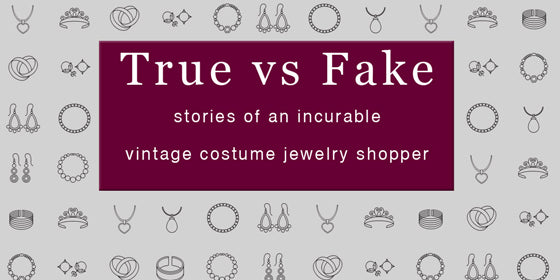
True vs Fake - how to shop vintage costume jewelry with confidence
Barbara Schwartz, a noted costume jewelry historian, is the author of "True vs Fake" , an in-depth blog series providing examples of how vintage costume jewelry can be accurately attributed. She also shares tips on how to avoid being duped into buying misidentified vintage costume jewelry.

